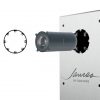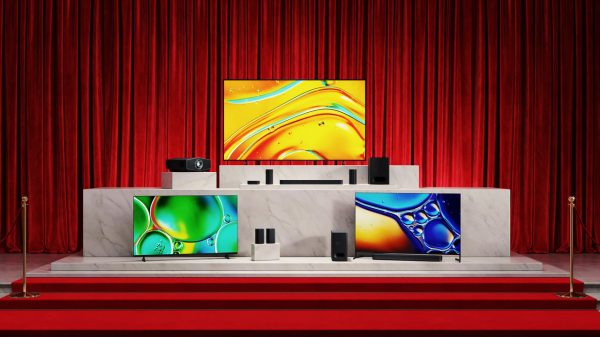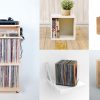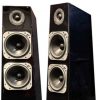This is a topic that doesn’t get enough attention. Aside from system building which we’re trying to focus on in our Audiophile System Builder series of articles. Most people don’t put any thought into the topic of room acoustics; and not until it’s too late and they already unboxed their new system.
Before you buy any piece of audio equipment, remember that your room is the single most important component in your stereo.
Exhale.
Even with something as simple as a pair of wireless loudspeakers, you need to pay attention to setup and room acoustics.
We have listened to more than a few six-figure stereo systems that left us less unimpressed, so don’t feel overly dismayed that your new $500 pair of bookshelf loudspeakers sound less than inspiring out of the box.
Experience has taught us; and it’s often a painful financial lesson, that even the best stereo systems in the world can fail to deliver the sonic experience you were expecting if set-up in the wrong room, or in a setting without proper acoustic treatment. Room acoustics affect even the best loudspeakers.
Concert venues, houses of worship, movie theaters, and recording studios utilize acoustic treatment to minimize or eliminate acoustic issues and while there are domestic issues to consider in the home setting; like your spouse hating a set of bass traps or absorption panels hanging out in your living room, the reality is that every room has acoustic issues and there are reasonable solutions to make your new pair of loudspeakers sound even better than they did in the store.

The Room
Everything about your room matters; the shape, dimensions, surface materials, position of windows, and doorways. Sound waves interact differently with the room and the objects within it; the sound from your loudspeakers reflects off of different surfaces in your room before it ever reaches your ears. Before you buy anything, think about the type of loudspeaker you are considering and how it might interact with your room.
If you plan on using a typical living space like a den or living room, measure your room and determine how far back you will be sitting from the set-up location of your loudspeaker, and how far into the room you can set them up. If (like most of us) you have domestic considerations, it’s unlikely that you will be able to position your new pair of loudspeakers 3-5’ from the wall which might allow them to sound their best; more open, deeper and wider soundstage.
Modern homes often feature a lot of windows, and while that might offer a picturesque view of the world outside, it’s often a recipe for disaster with a lot of loudspeakers as the reflective nature of glass can negatively affect spatial cues and make your system sound very bright. There are solutions to this which we will discuss.
Room shape and dimensions have a critical impact on bass response; bass waves require space to unfold but that doesn’t mean that you can’t hear or feel bass information below a certain frequency in a small room if you make some acoustic changes.
Sound waves generated by your loudspeakers are either absorbed by objects or materials in the room, reflect off surfaces within your room, or pass through the room itself into an adjoining space. A rectangular room is often a better starting point than a perfectly square room.
Floor surfaces can have a significant impact on the sound of your loudspeakers; stone, tile, and marble without any type of area rug can make your system more forward sounding or bright. Hardwood floors absorb sound more effectively, but they also require some form of area rug or carpeting to minimize reflections and low frequency information.
Heavily carpeted rooms will often sound acoustically dead if combined with too much furniture. The key is to find a balance between lively and dead.

No Hideous Room Acoustic Panels
Professional acoustic products work as intended, but with few exceptions, they look pretty hideous in a domestic environment. Because our primary concerns are minimizing the first reflection points and improving the bass response of your loudspeakers within your existing space, there are a number of inexpensive and practical solutions that you can implement.
The wall surface behind your loudspeakers should never be too hard (bare walls) or too absorptive. A wall unit filled with a mixture of books, picture frames, and even records will minimize reflections (depending on the type of loudspeaker) and absorb bass if you have to place your loudspeaker up against the wall; in a scenario where your loudspeaker is really close to the wall, bass will wrap around the rear of the cabinet, reflect off the wall and arrive at your ears out of phase with the rest of the sound.
Music will always sound like it’s coming from the wall devoid of any soundstage depth or width.
The first reflection points along the sidewalls can have an enormous impact on the imaging and overall clarity of the sound. It’s somewhat surreal how treating these two points can make everything sound more three-dimensional and focused. You will require an assistant for this but it’s a quick fix.
Sit in your normal listening position and have your friend walk with a small mirror along the surface of the wall until you see the loudspeaker’s (starting at the loudspeaker itself) reflection.
Mark this with a pencil on both walls. In a professional setting, acoustic panels of varying thickness are used to absorb frequency information. In a domestic setting, consider using bookshelves, wall hangings, or even art work (without glass) at these points.
Furniture can be used effectively to minimize reflections and absorb excessive bass; a large sofa or wood coffee table can be very effective. Glass tables should be avoided as they will exacerbate the problems we are trying to fix.
Carpeting or area rugs can be a huge source of improvement because they will reduce room noise, impact reverberation, and absorb reflections. If possible, stick with natural fibers like wool which have better absorptive qualities.
Room acoustics is not a very exciting topic but if you fix 2-3 of these issues, the sonic rewards can be substantial. You don’t have to spend a lot of money either.
Use what you have already and get that tape measure and mirror ready.
Good luck.
Related Reading



















































Rich Townsend
April 13, 2021 at 9:48 pm
Hi Ian,
It’s great to see you addressing the issue of room acoustics. This is an elephant in the room for audio reproduction, but one that most people don’t know anything about, or even that it’s an issue in the first place.
Having treated my studio, I can testify to the huge benefits in clarity across the frequency range.
As you say, the two key areas to address are first reflection points, and control of the lower frequencies.
Some companies make ‘art’ panels that are designed to blend in with domestic decor. I’d say that using these at first reflection points could be very effective.
To control lower frequencies, I’m afraid there’s no way round it – to make a significant difference you need quite a lot of absorption. I’m not sure it’s really possible to get this without intruding on the decor. The risk with carpets is that they only absorb a limited range of frequencies and can leave a room sounding dull at high frequencies without fixing the lower frequencies atall.
Ian White
April 13, 2021 at 11:19 pm
Rich,
100% agree. I’ve struggled with this in my den, living room, and basement HT.
My rooms are typical living spaces and bass is a huge issue. Even with REL subwoofers set-up properly.
More acoustics articles to come and thank you for reading.
Ian
AkaRasty
April 20, 2021 at 11:22 am
I knew that carpets and similar coverings can be used both to insulate the room and to provide good acoustics and sound insulation at the same time. I found out about this a couple of days before I placed an order for large rugs on the DorisLeslieBlau website. Thus, I was able to achieve two big profits at once. I was able to get rid of the cold floor and the bad acoustics. I recommend you to read more useful information on the subject on the Internet, if you are interested.
Ostap Nakoneczny
October 15, 2021 at 12:57 am
built a dedicated listening room using a decoupled design of all of the surfaces as a starting point. First reflection points of both speakers on both sides were treated with a 100% recycled pleated material. Was able to hide a Helmholz resonator in each corner to deal with the calculated room modes in the lower registers.The flooring consists of a layer of non-compressible acoustic under pad for damping with a one piece vinyl floor that also has damping properties. Totally worth it.